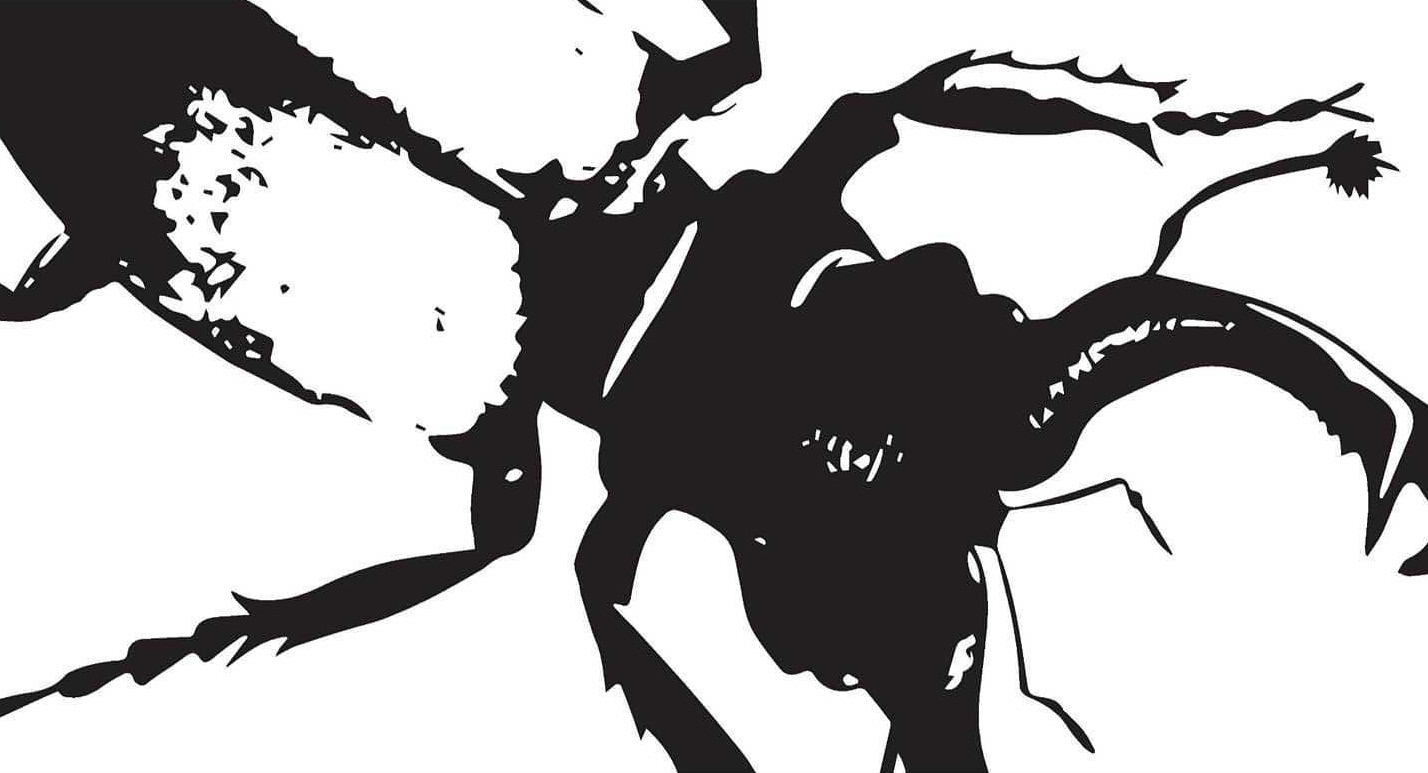'0.1%' by Jonathan Baldock
I visited the exhibition ‘0.1%’ by Jonathan Baldock at the London Mithraeum Bloomberg Space. The space is on the site of the Roman temple of Mithras.
The exhibition is made up of sculptural installations created using hessian wool, clay, wood and metal. The installations contain symbolism influenced by Pagan myths and folklore while having connections to Baldock’s familial history and connection to nature.
The use of wool within this exhibition has relevance to my own practice as I am currently exploring using fabric as a surface for drawing and painting using Batik techniques. The way Baldock installed his textile panel work by hanging them from hop poles to create a maze-like environment inspired me to consider the ways I can display my work and how my work can influence the space it exists in, and vice versa.
This exhibition relates to the work of John James Audubon and Mark Fairnington, whose practice I have previously researched in Unit 1, as it involves the theme of nature, how the artist perceives it and what it may mean to them as an individual.
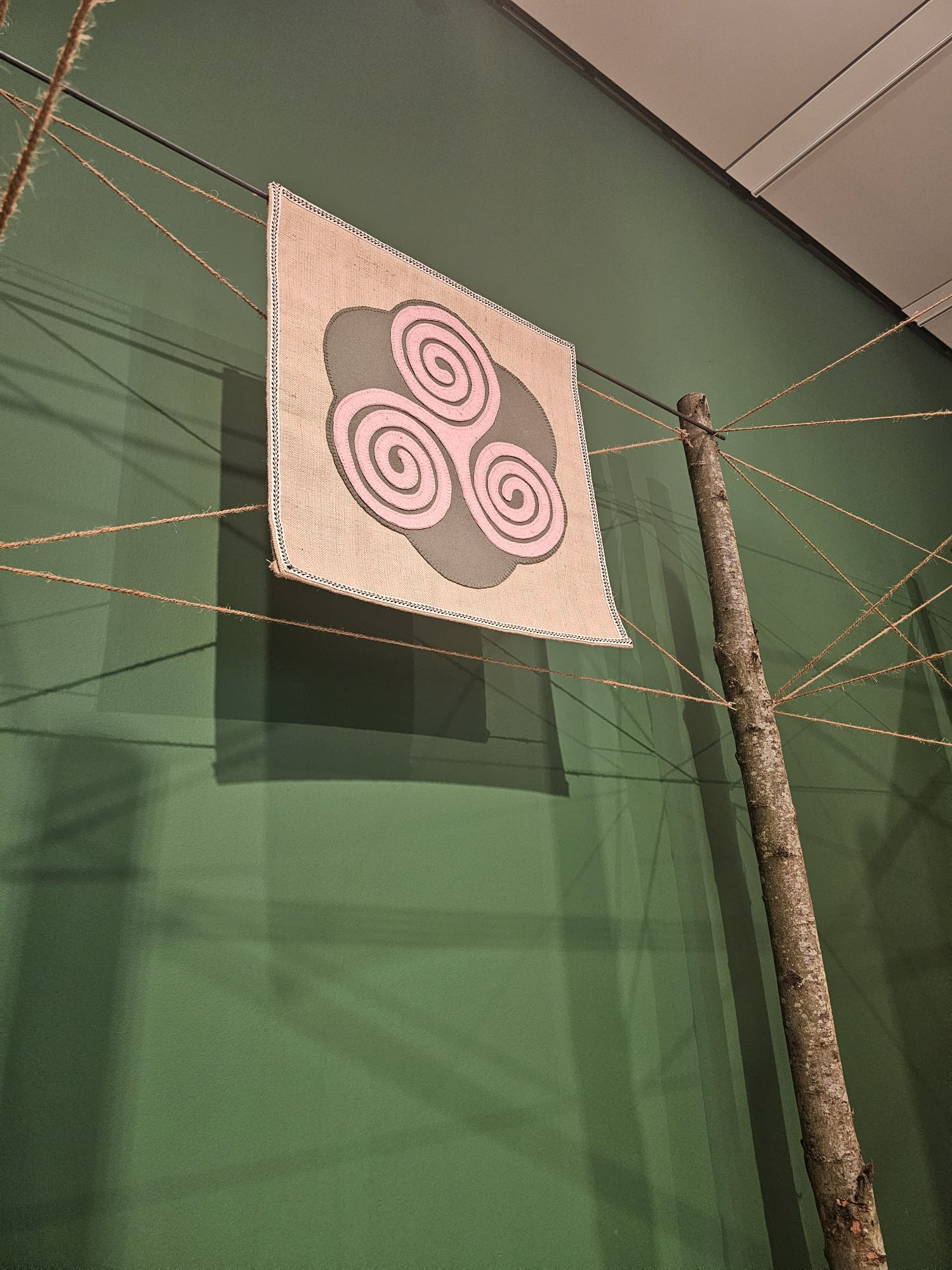
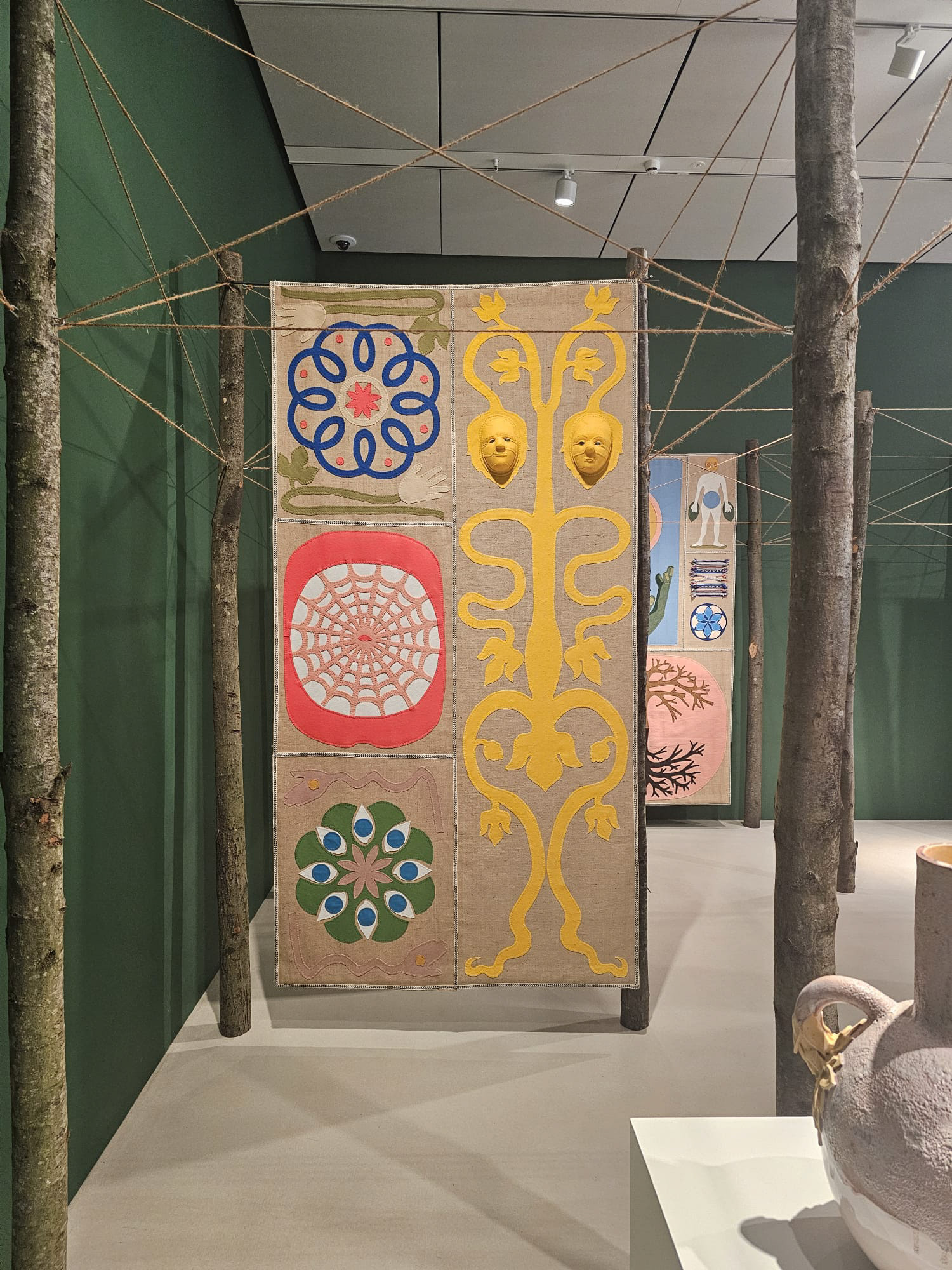
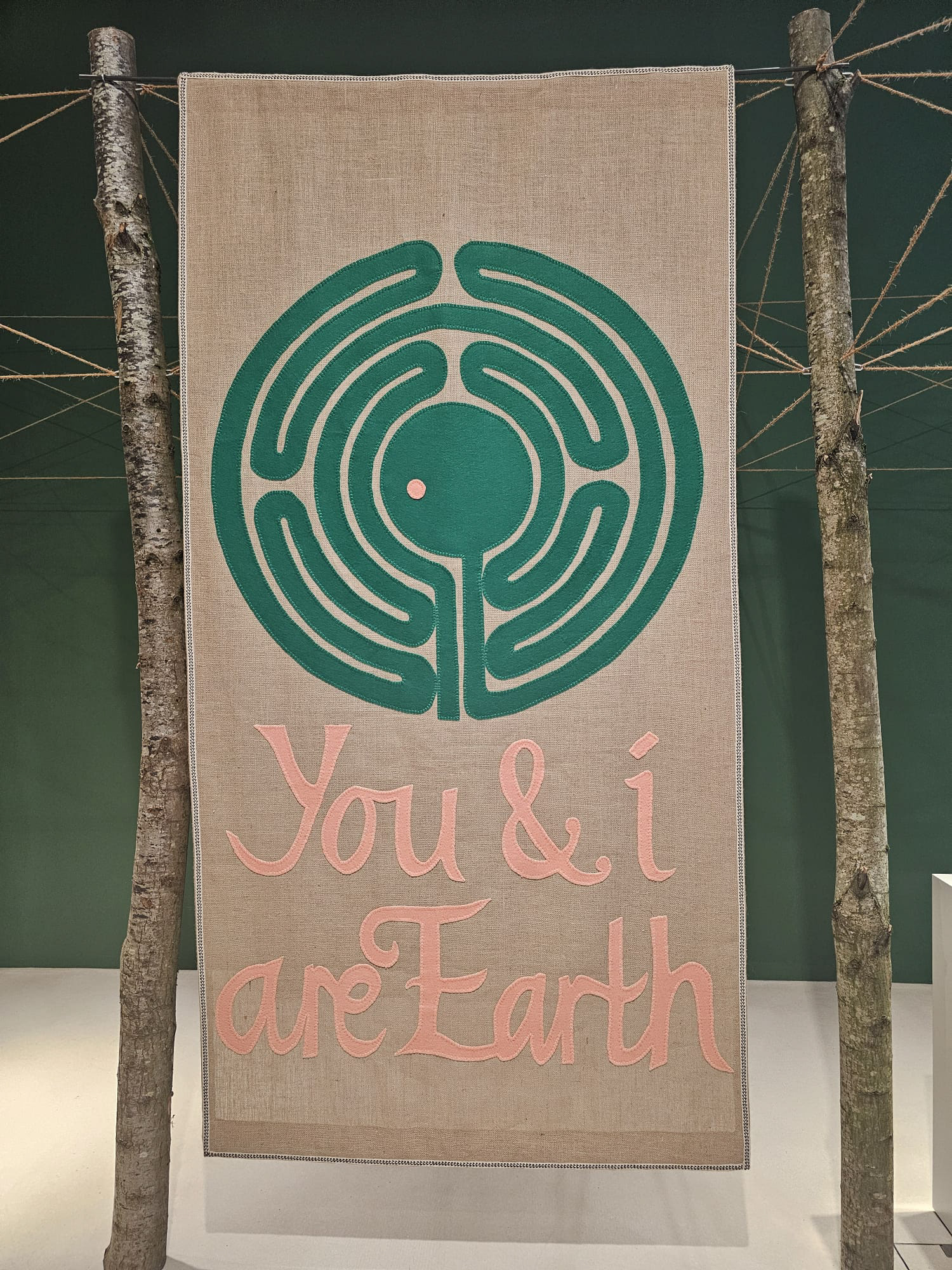
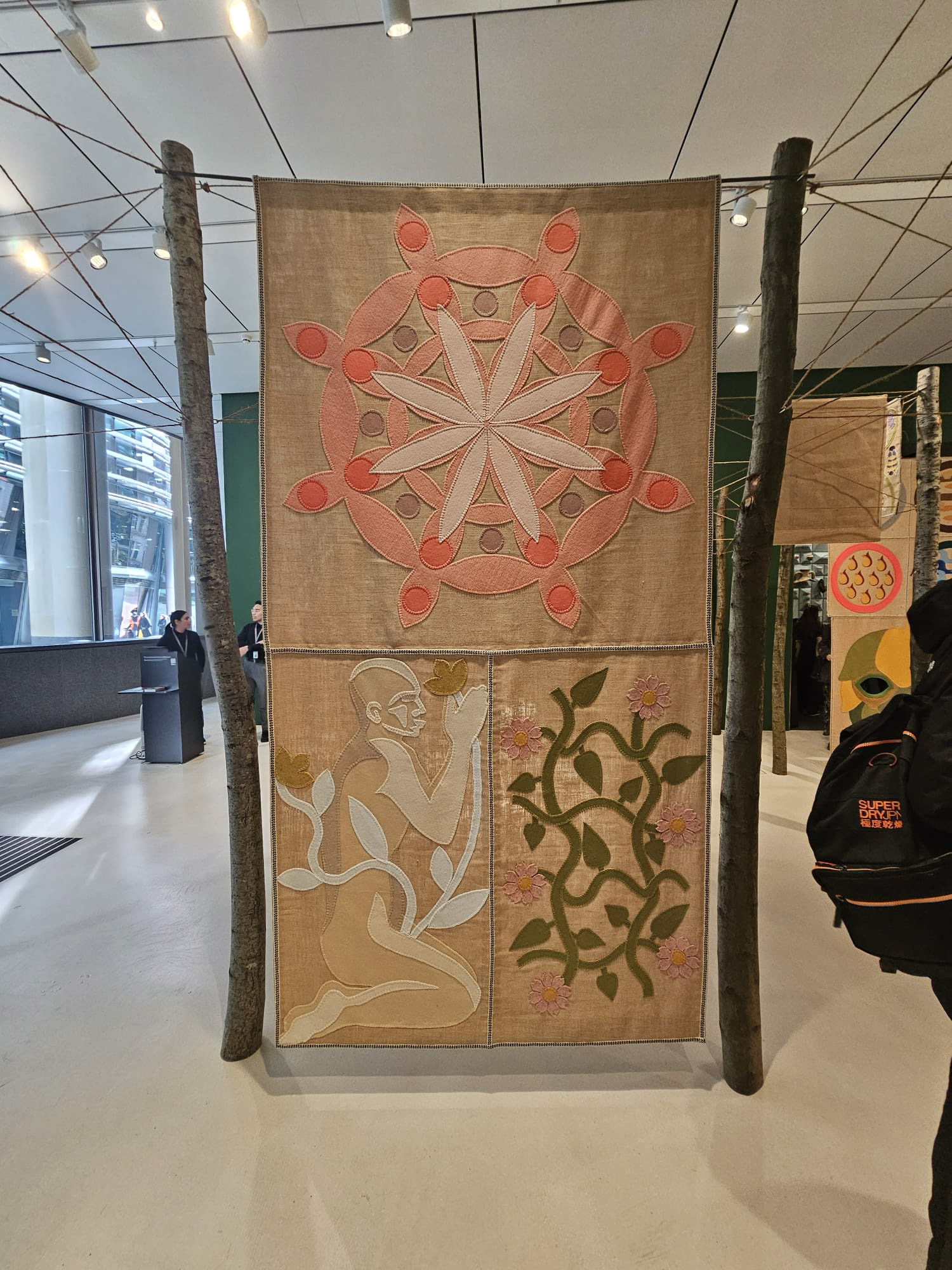
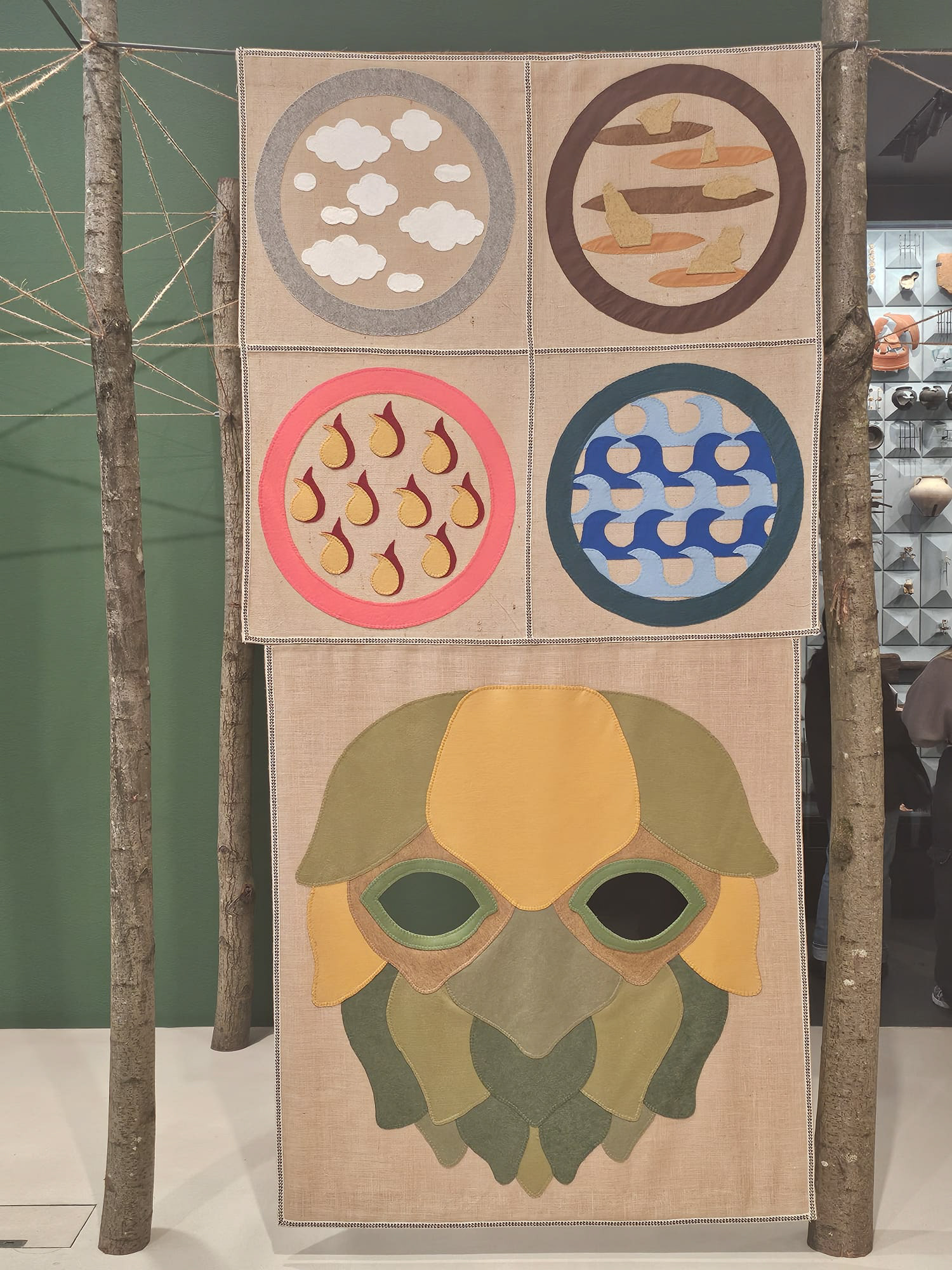
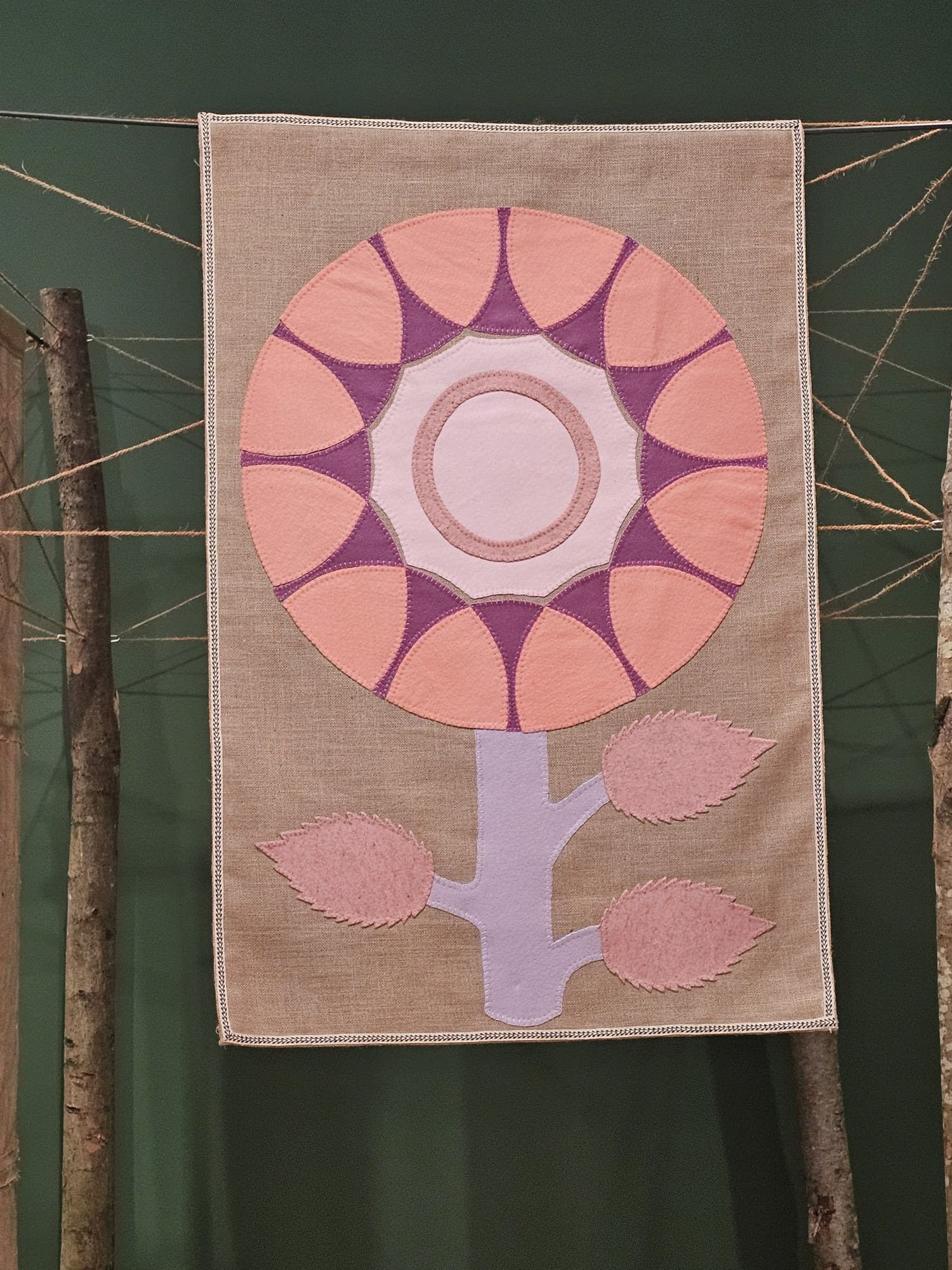
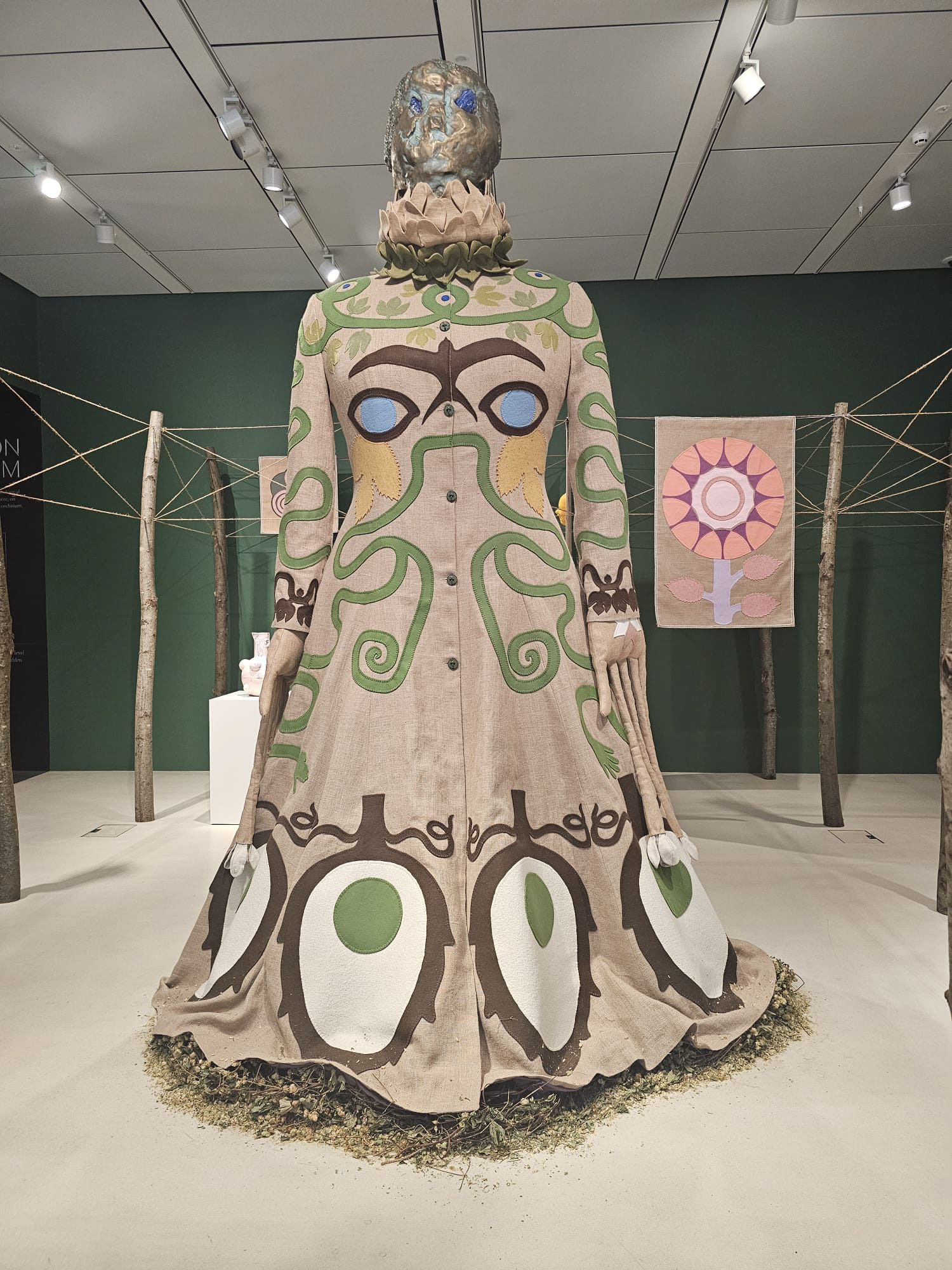

Flower Paintings by Georgia O’Keeffe
I have conducted research into paintings by Georgia O’Keeffe, specifically her oil paintings of flowers.
Georgia O'Keeffe (1887-1986) was an American painter who is most known for her paintings of plants and wider landscapes. O’Keeffe used oil paint on canvas to create these paintings of flowers – with thought given to the position of the flowers and the way they would be cropped to bring focus into the most important forms within each painting.
O’Keeffe’s paintings were from life and based on flowers growing in places she had visited, which also allowed her art to be influenced by emotion and events taking place during their creation.
O’Keeffe’s paintings of flowers are relevant to my practice as I have recently begun making Batik paintings of plants that I have viewed in places that I have visited. Her paintings also, at least in part, act as a medium for audiences to gain insight into her own subjective view of the natural world – which is something I would like to investigate within my practice.
Squash Bottoms (1925) by Georgia O'Keeffe
Black Iris (1926) by Georgia O'Keeffe
Wax Prints by Yinka Shonibare
I have also researched the Dutch wax paintings by Yinka Shonibare. Yinka Shonibare (1962) is an artist who investigates cultural and national identities within his practice.
His Dutch wax paintings, which were the focus of my research, are created using printing blocks to apply resin to a piece of fabric, the fabric is then dyed with the resin acting as a resist to the dyeing process. Shonibare adds to his process by sewing additional pieces of fabric on to each painting, embroidery and further painting after dyeing with various paints to create his finished paintings.
Researching Shonibare’s paintings are relevant to my practice as I have begun to focus on using batik techniques within my practice and the Dutch wax printing technique that he uses has historical ties to the Batik technique as it was introduced by Dutch merchants inspired by Indonesian Batik designs. Viewing these paintings can act as inspiration for me to experiment with using further artistic processes on my paintings to create unique effects and surfaces that may not be possible with Batik techniques alone.
I have also found a connection between our practices as Shonibare’s prints also depict animals, flowers and shapes inspired by natural forms including wood, earth and microscopic cells and other lifeforms.
Double Dutch (1994) by Yinka Shonibare
